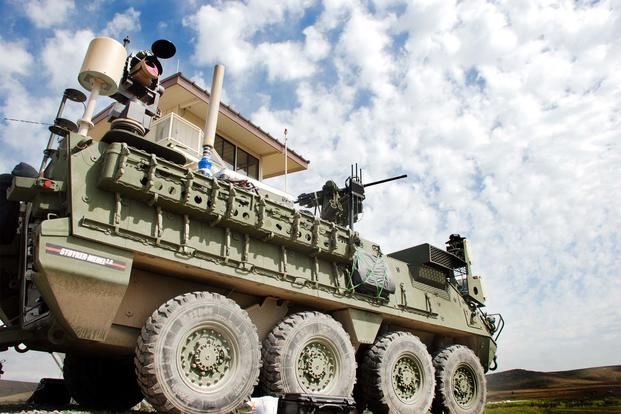The U.S. military will incorporate the newest generation of solid-state fiber optic lasers as early as 2021, according to Northrop Grumman Corp. officials.
At the annual Association of the U.S. Army meeting in Washington, D.C., a Northrop Grumman official confirmed that the company has been contracted to deliver the first 50-kilowatt laser to the Army. This medium-sized system will be able to engage all types of air targets silently without the need to reload.
According to an Aug. 1 release from the Army, Northrop Grumman and Raytheon have both been contracted to develop competing prototype lasers to be integrated into General Dynamics’ Stryker combat vehicle for short-range air defense.
The laser will be mounted on a platoon of four Stryker vehicles in fiscal 2022, "to protect maneuvering Brigade Combat Teams from unmanned aerial systems (UAS), rotary-wing aircraft, and rockets, artillery and mortar (RAM)," according to the release.
"I believe it's going to be a game-changer," said Mark Skinner, Northrop Grumman's vice president for Directed Energy.
Skinner said the new laser systems can be dialed up or down, depending on the amount of energy the operator wants to put on the target. Dialing down can effectively disable many drones, while preserving energy. Laser systems are also easier to maintain than their kinetic counterparts, he said.
Related: Check out Military.com's AUSA Conference coverage
"The logistics train associated with laser weapons is minimal. Once you install the system and you can generate electricity, then you have a weapon system," Skinner said.
He noted that the safety and potency of laser systems have increased significantly.
"In the past, we used chemical lasers, which were dangerous. You had to handle a dangerous chemical to generate a laser beam. And then we went to ... a solid-state slab laser, but they were fairly inefficient," Skinner said. "Today, we operate with solid state fiber optic lasers, which gives us the ability to safely operate the system, and yet at a high efficiency we can convert electrical energy into photons. It gives us the best of both worlds."
Mike O'Hara, advanced programs manager at Northrop Grumman's Missile Defense and Protective Systems Division, said the company currently is combining the fiber optic lasers with the more common kinetic weaponry. But as artificial intelligence technology develops, "we'll be able to maximize the use of different types of weapons and sensors."
In the future, the company will focus on manufacturing passive weaponry, which doesn't radiate and therefore cannot be detected, O'Hara said.












